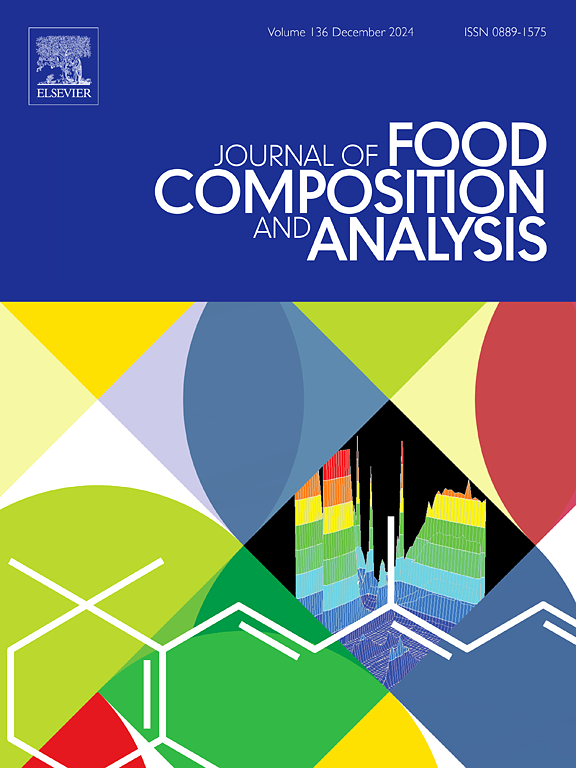Comparison and analysis for exclusively expressed sites of milk fat globule membrane phosphoproteins between human and bovine milk based on label-free phosphoproteomic
IF 4
2区 农林科学
Q2 CHEMISTRY, APPLIED
引用次数: 0
Abstract
Milk fat globule membrane (MFGM) proteins, which serve as nutritional components in infant formulas, have garnered increasing attention. This study investigates the exclusively expressed MFGM protein phosphorylation of human milk (HM) and bovine milk (BM) using label-free phosphoproteomics. The results indicate that 188 exclusively phosphorylated sites were identified on 105 phosphoproteins in HM, while 267 exclusively phosphorylated sites were identified on 149 phosphoproteins in BM. Osteopontin and Perilipin-2 demonstrated the highest number of phosphorylation sites in HM and BM. Bioinformatics function analysis revealed that phosphorylated proteins in human MFGM were primarily involved in development and immune-related functions, whereas phosphorylated proteins in bovine MFGM were predominantly associated with signal response functions. Thirteen key MFGM proteins were identified by screening. Notably, Butyrophilin subfamily 1 member A1 (BTN1A1), Complement C3 (C3), and Lactadherin (MFGE8) were contributed to accurately mimic. This research is instrumental in bridging the disparity between HM and BM-based formulas, as well as elucidating the role of MFGM protein phosphorylation in infant formula milk powder industry.
求助全文
约1分钟内获得全文
求助全文
来源期刊

Journal of Food Composition and Analysis
工程技术-食品科技
CiteScore
6.20
自引率
11.60%
发文量
601
审稿时长
53 days
期刊介绍:
The Journal of Food Composition and Analysis publishes manuscripts on scientific aspects of data on the chemical composition of human foods, with particular emphasis on actual data on composition of foods; analytical methods; studies on the manipulation, storage, distribution and use of food composition data; and studies on the statistics, use and distribution of such data and data systems. The Journal''s basis is nutrient composition, with increasing emphasis on bioactive non-nutrient and anti-nutrient components. Papers must provide sufficient description of the food samples, analytical methods, quality control procedures and statistical treatments of the data to permit the end users of the food composition data to evaluate the appropriateness of such data in their projects.
The Journal does not publish papers on: microbiological compounds; sensory quality; aromatics/volatiles in food and wine; essential oils; organoleptic characteristics of food; physical properties; or clinical papers and pharmacology-related papers.
 求助内容:
求助内容: 应助结果提醒方式:
应助结果提醒方式:


